A transitional fireplace effortlessly bridges the gap between traditional comfort and modern minimalism, creating a focal point that is both sophisticated and inviting. This design style blends classic elements, such as mantels and detailed surrounds, with contemporary clean lines and neutral color palettes. The result is a timeless aesthetic that avoids feeling overly ornate or starkly cold, offering a versatile foundation for any living space. By focusing on balanced proportions, refined materials, and uncluttered styling, a transitional fireplace provides enduring appeal that complements evolving decor tastes, making it a perfect choice for a truly timeless home interior design.
1. Transitional Fireplace with a Cast Stone Surround

For a look of understated elegance, a transitional fireplace featuring a cast stone surround offers a perfect blend of classic texture and clean form. Cast stone provides the gravitas of natural quarried stone but can be molded into simpler, more refined profiles suitable for a transitional aesthetic. This material brings a sense of history and permanence without the ornate detailing of purely traditional designs. Paired with a simple firebox and a minimalist mantel shelf, the neutral, earthy tones of cast stone create a warm and inviting focal point that feels both substantial and sophisticated, anchoring the room with its timeless and durable character.
2. Floor-to-Ceiling Transitional Fireplace with Marble Slabs

Creating a dramatic and luxurious statement, a floor-to-ceiling transitional fireplace clad in large marble slabs is the epitome of modern sophistication. This approach minimizes grout lines, showcasing the stone's natural veining as a piece of art. The verticality draws the eye upward, enhancing the room's sense of height and grandeur. To maintain the transitional balance, select a marble with soft, subtle veining in a neutral palette of white, gray, or cream. This design choice eliminates the need for a traditional mantel, allowing the sheer beauty of the uninterrupted stone to serve as the powerful, yet elegantly simple, centerpiece of the space.
3. Transitional Fireplace with Dark Herringbone Tile

To introduce subtle pattern and depth, a transitional fireplace with a dark herringbone tile surround offers a sophisticated twist on a classic design. Using tiles in shades of charcoal, black, or deep navy in a herringbone layout adds visual interest and a touch of contemporary flair without overwhelming the space. This geometric pattern contrasts beautifully with the clean lines of a simple wood or metal mantel. The dark color provides a bold anchor for the room, making the hearth a cozy and compelling focal point, especially when the fire is lit, creating a dynamic interplay of light and shadow on the textured surface.
4. Minimalist Transitional Fireplace with a Concrete Finish
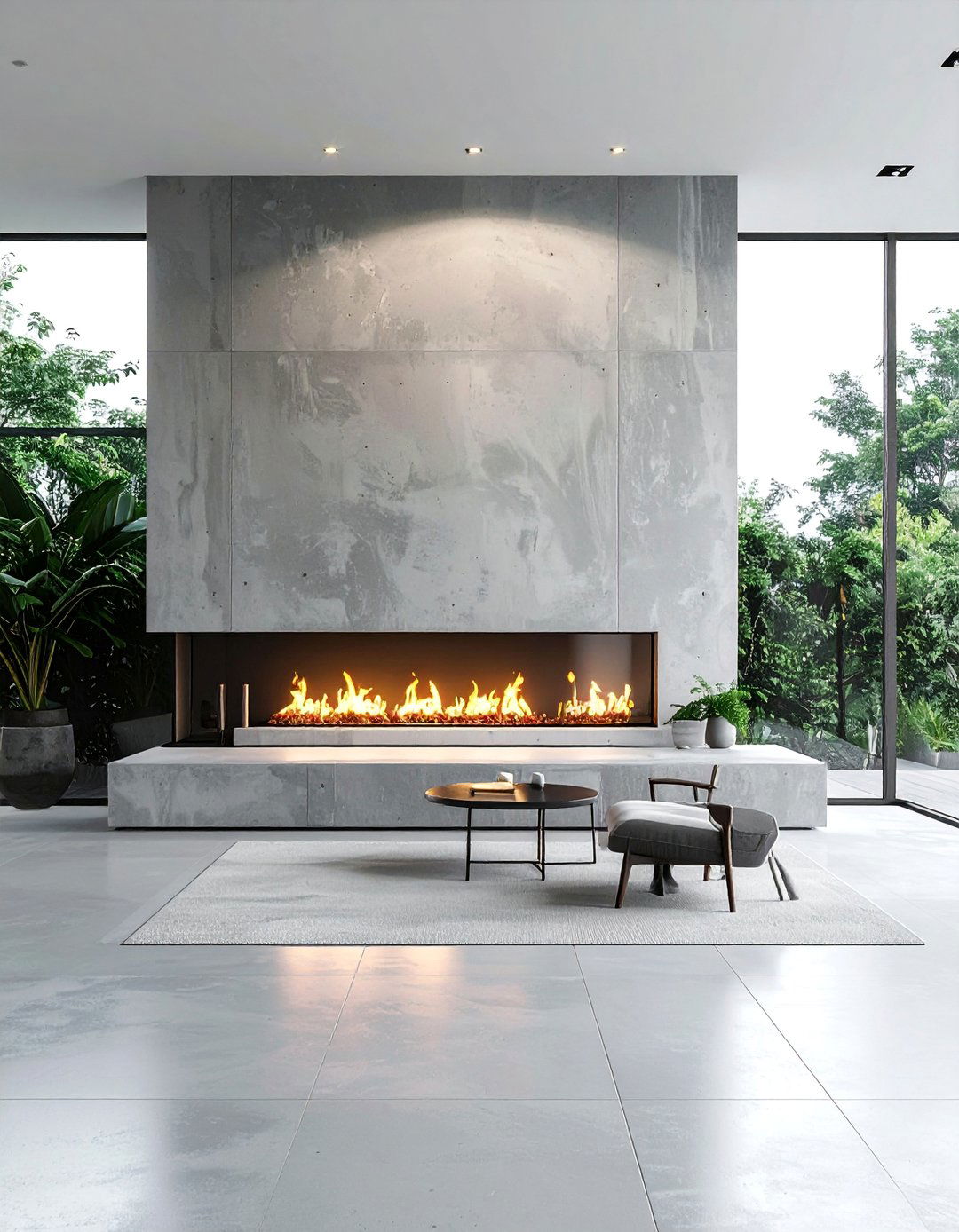
Embracing an industrial-chic element, a minimalist transitional fireplace with a sleek concrete finish is a bold yet refined choice. The smooth, cool surface of concrete introduces a modern texture that pairs exceptionally well with warmer, traditional elements like wood floors or plush furnishings. This style often forgoes a mantel entirely, focusing on a clean, architectural form that extends from floor to ceiling. The neutral gray hue of the concrete acts as a versatile backdrop, allowing the flickering flames to take center stage. This design creates a striking focal point that is understated, durable, and effortlessly bridges contemporary and classic styles for a truly unique look.
5. Transitional Fireplace Flanked by Custom Built-Ins
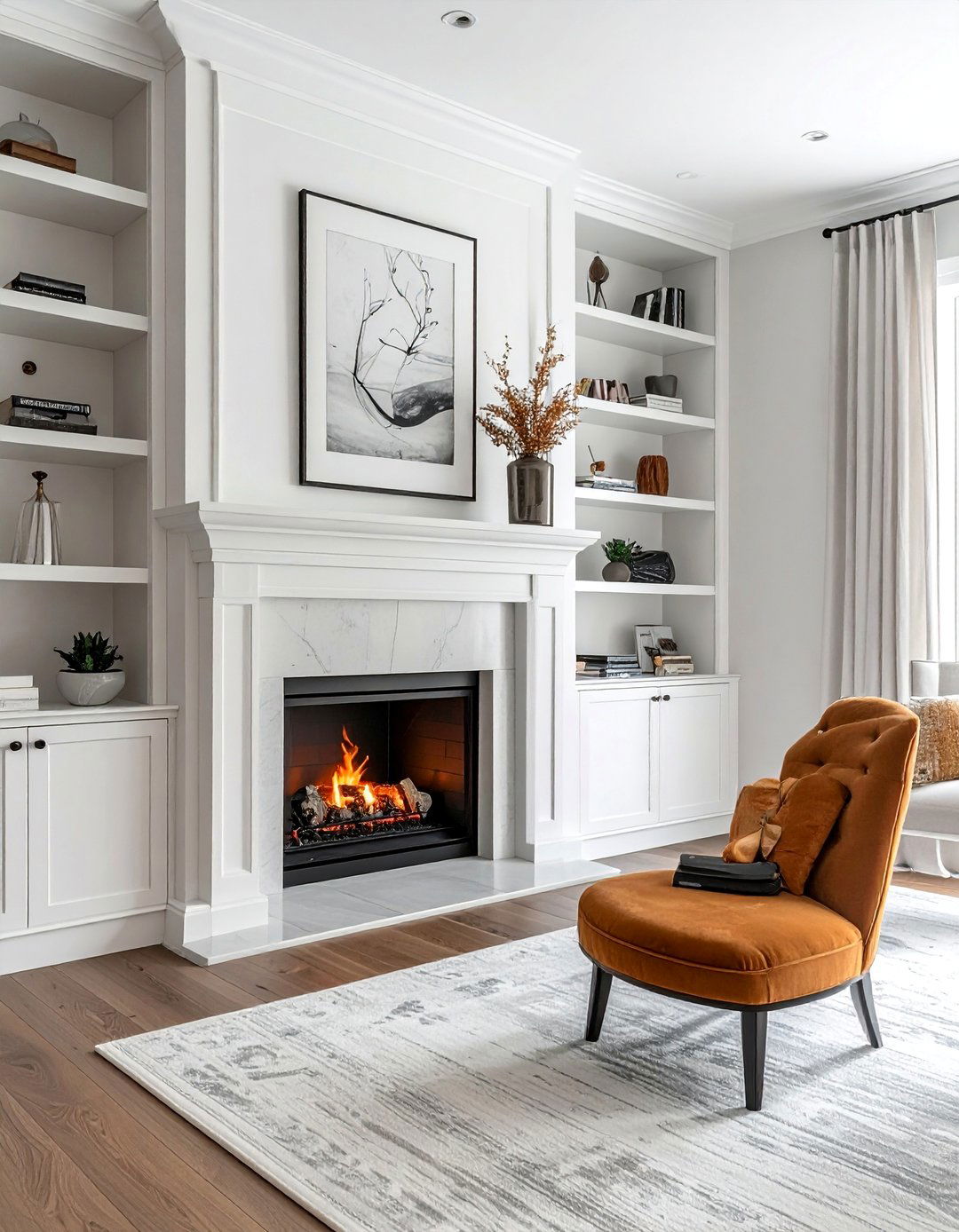
For a seamless and functional design, a transitional fireplace flanked by custom built-in shelving creates a harmonious and balanced focal point. This approach integrates the fireplace into the architecture of the room, providing ample space for storage and display. The shelving should feature clean lines and simple hardware to align with the transitional aesthetic, painted in the same color as the walls or the fireplace surround for a cohesive look. This design not only frames the hearth beautifully but also adds practicality, allowing you to showcase books, art, and cherished objects, making the entire wall a thoughtfully curated and unified feature.
6. Transitional Fireplace with a Reclaimed Wood Beam Mantel
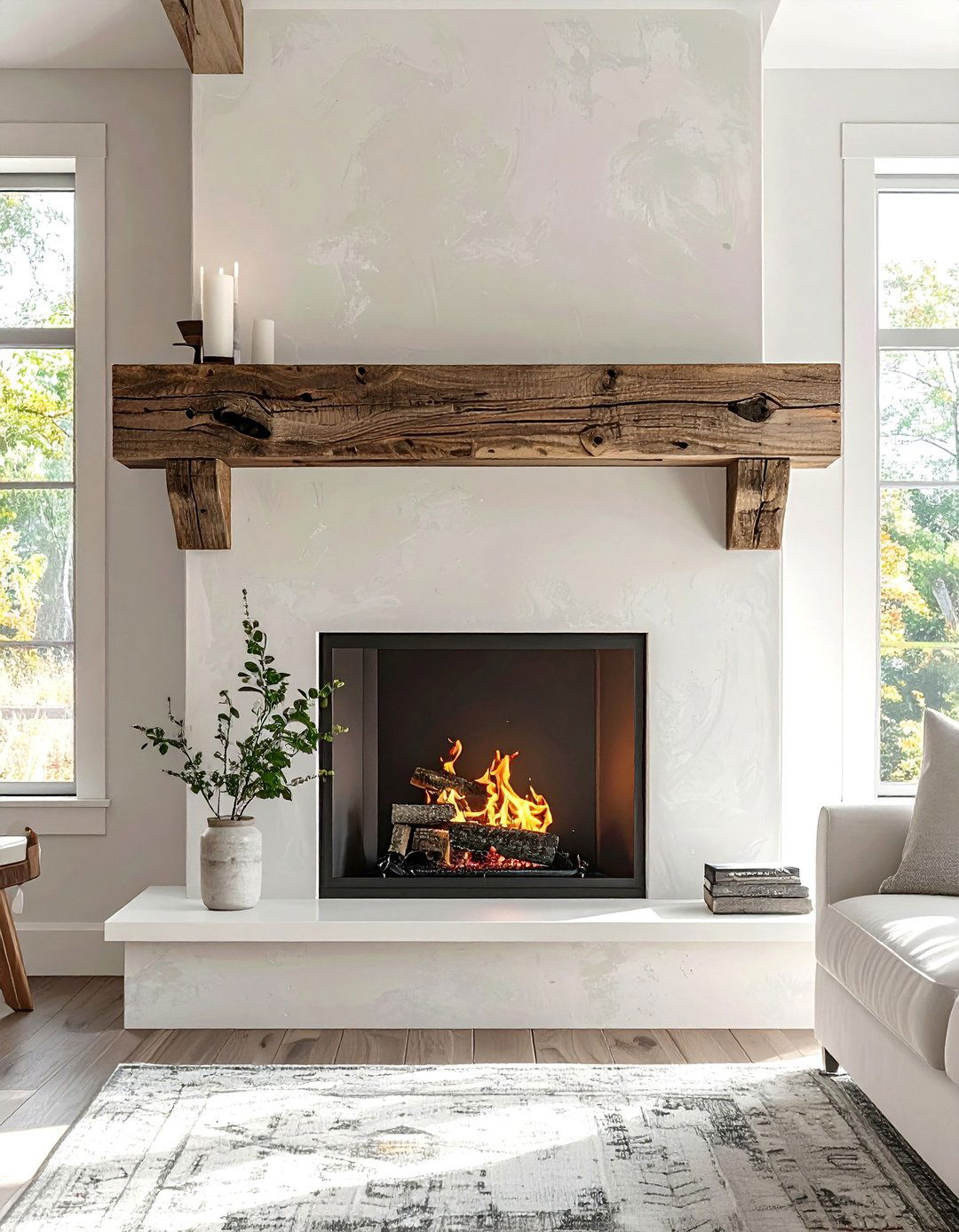
Bringing in natural warmth and rustic charm, a transitional fireplace featuring a reclaimed wood beam mantel strikes a perfect balance between old and new. The weathered texture and rich history of the reclaimed wood provide a striking contrast against a smooth, modern surround made of plaster, stone, or tile. This single, substantial element adds character and a sense of authenticity without leaning too heavily into a purely rustic style. The clean lines of the fireplace itself keep the overall look refined and contemporary, allowing the beam to serve as a beautiful, organic focal point that tells a story and grounds the space.
7. Transitional Fireplace with a Simple Painted Wood Surround
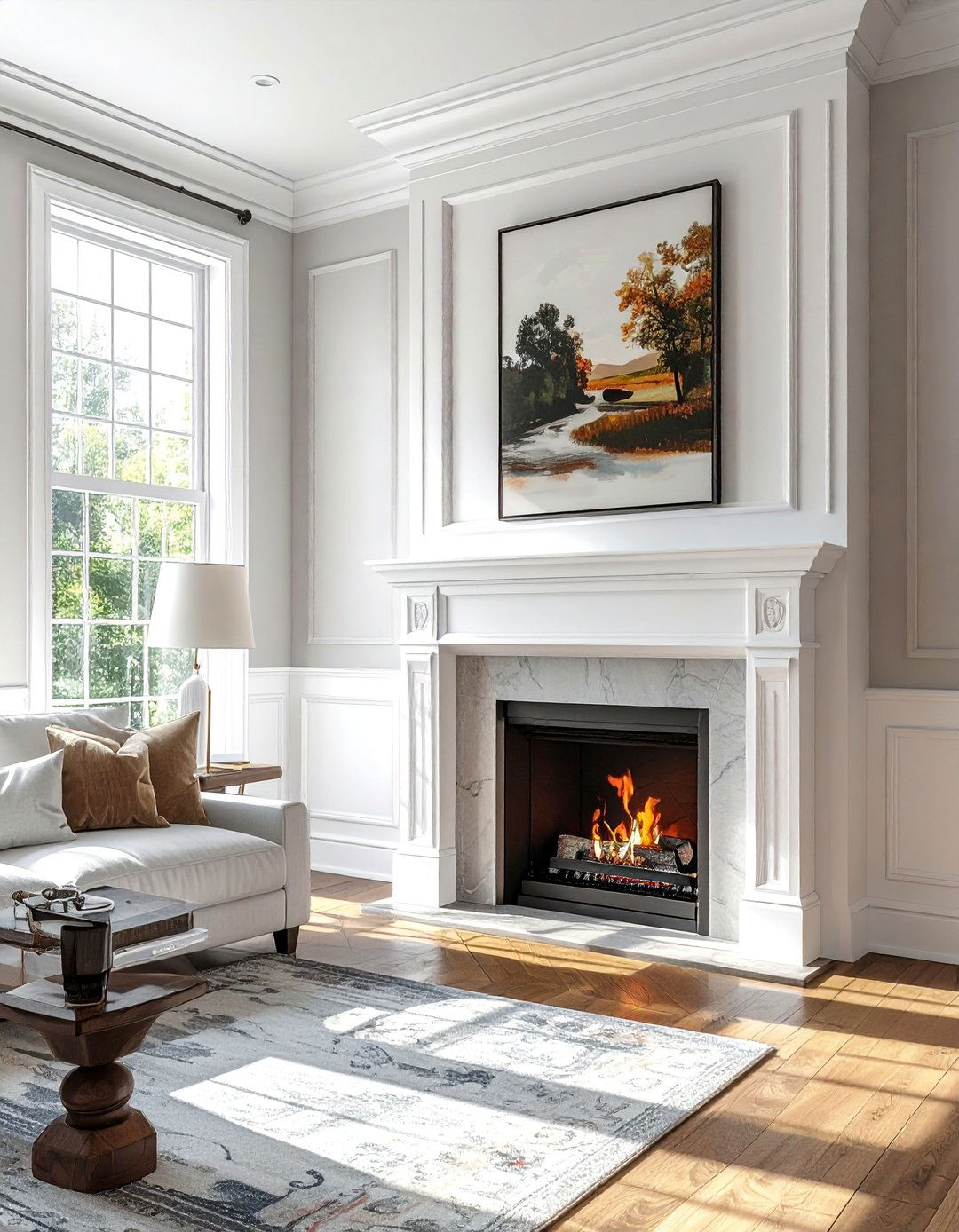
A transitional fireplace with a simple painted wood surround offers a crisp, clean, and highly versatile option that can easily adapt to any decor. This design utilizes classic molding profiles but keeps them understated and proportional, avoiding ornate carvings. Painting the surround in a soft neutral—like white, cream, or gray—creates a fresh and timeless look that allows the fireplace to blend seamlessly with the room's architecture. This approach provides a polished frame for the firebox and hearth without demanding all the attention, making it an ideal backdrop for artwork or a mirror placed above the simple, elegant mantel shelf.
8. Transitional Fireplace with Integrated Bench Seating
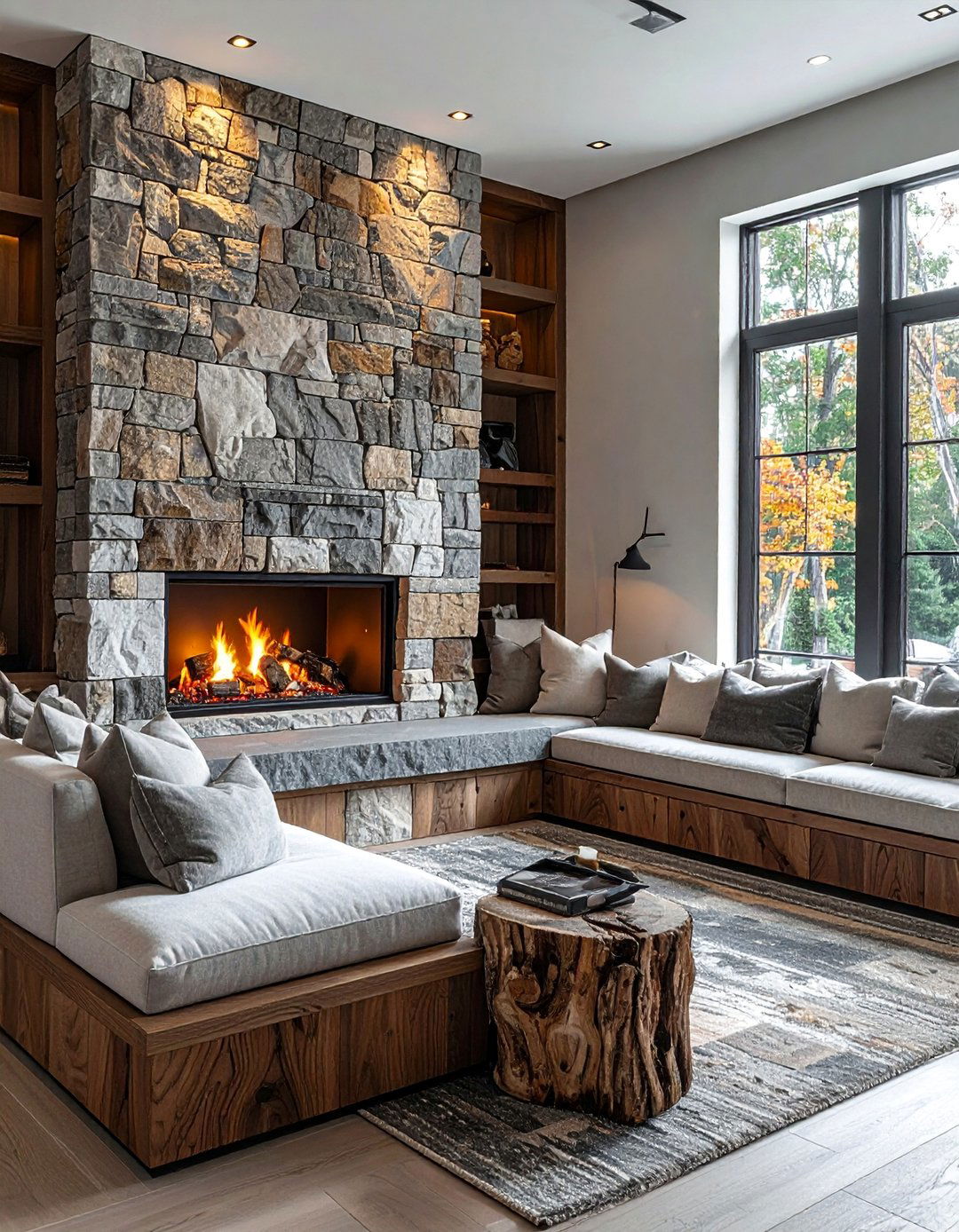
To enhance both form and function, a transitional fireplace with integrated bench seating creates a cozy and inviting nook. Extending the hearth material, such as stone or concrete, into low benches on one or both sides of the firebox adds a practical and architectural element. This design encourages gathering and transforms the fireplace into more than just a visual centerpiece. Top the benches with custom cushions in a neutral fabric to soften the look and add comfort. This clever use of space provides extra seating while maintaining the clean, uncluttered lines that are characteristic of the balanced and highly functional transitional style.
9. Transitional Fireplace with a Black Metal Frame
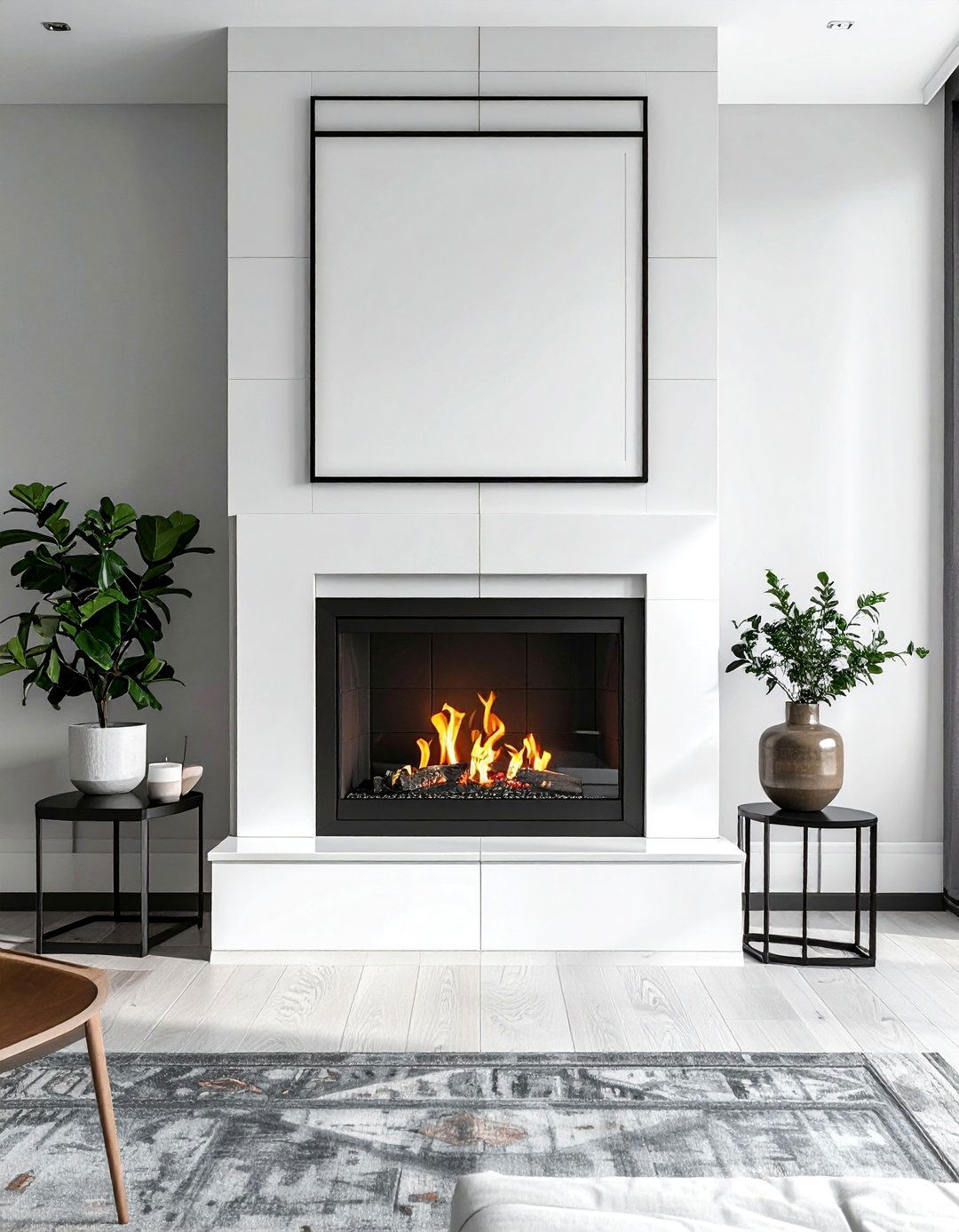
For a touch of industrial edge within a refined setting, a transitional fireplace with a sleek black metal frame offers a striking contrast. This design often features a simple, clean-lined steel or iron surround that frames the firebox, providing a bold, graphic element against a lighter wall or tile. The dark finish adds definition and a contemporary feel, yet its minimalist form prevents it from overpowering the space. This approach works exceptionally well when paired with other black accents in the room, such as window frames or light fixtures, creating a cohesive and sophisticated look that feels both modern and enduringly stylish.
10. Transitional Fireplace with a Floor-to-Ceiling Limestone Surround
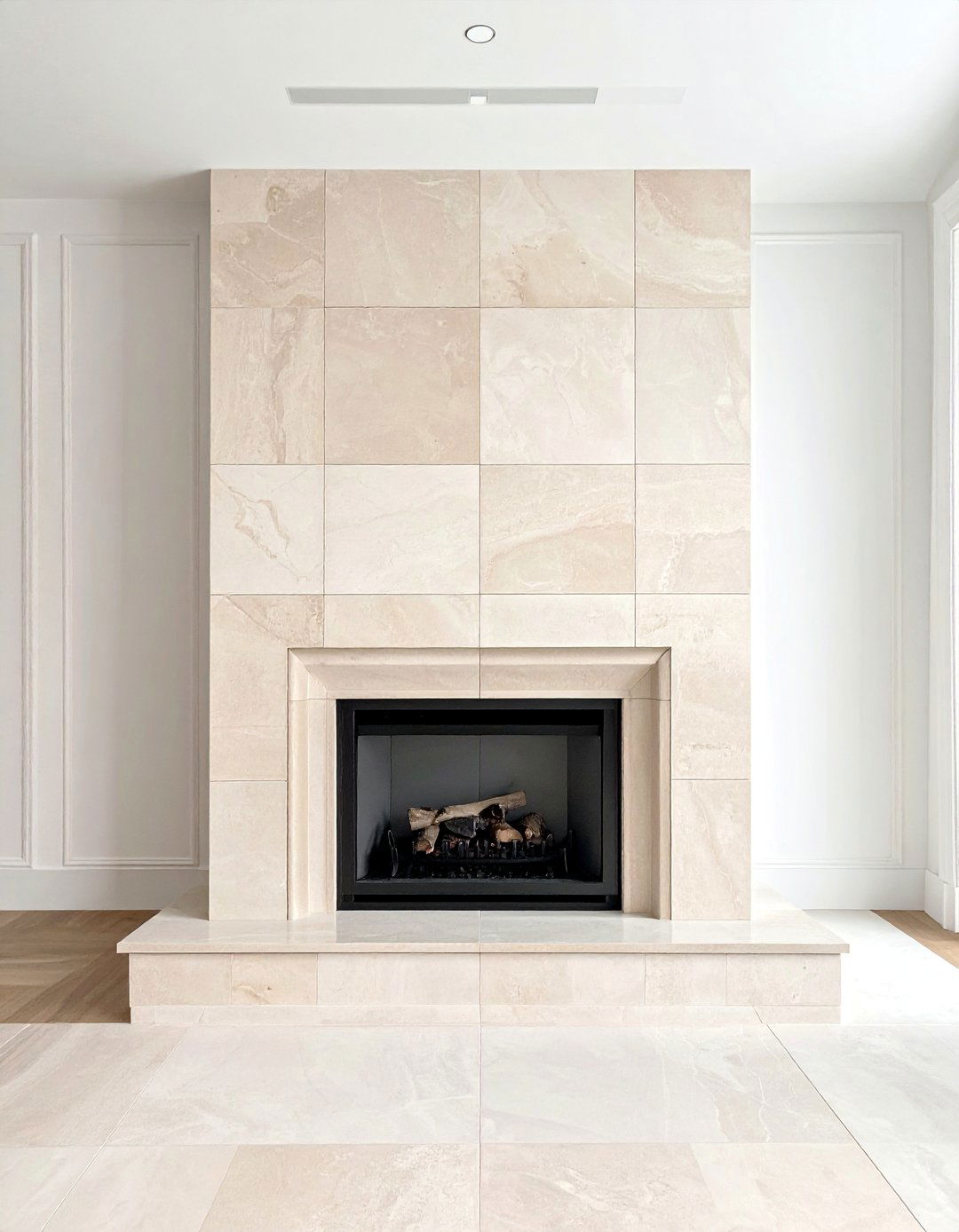
A transitional fireplace featuring a floor-to-ceiling limestone surround exudes a quiet, organic luxury. The soft, creamy tones and subtle texture of limestone bring a natural warmth and elegance that is less formal than marble but more refined than rustic stone. Extending the limestone from the floor to the ceiling creates a monolithic and impactful feature wall, drawing the eye upward and making the room feel more spacious. The material’s natural variations add depth and character, while its clean-cut installation maintains the simple, uncluttered lines essential to transitional design, resulting in a serene and timelessly beautiful focal point for any space.
11. Transitional Fireplace with a Soapstone Surround
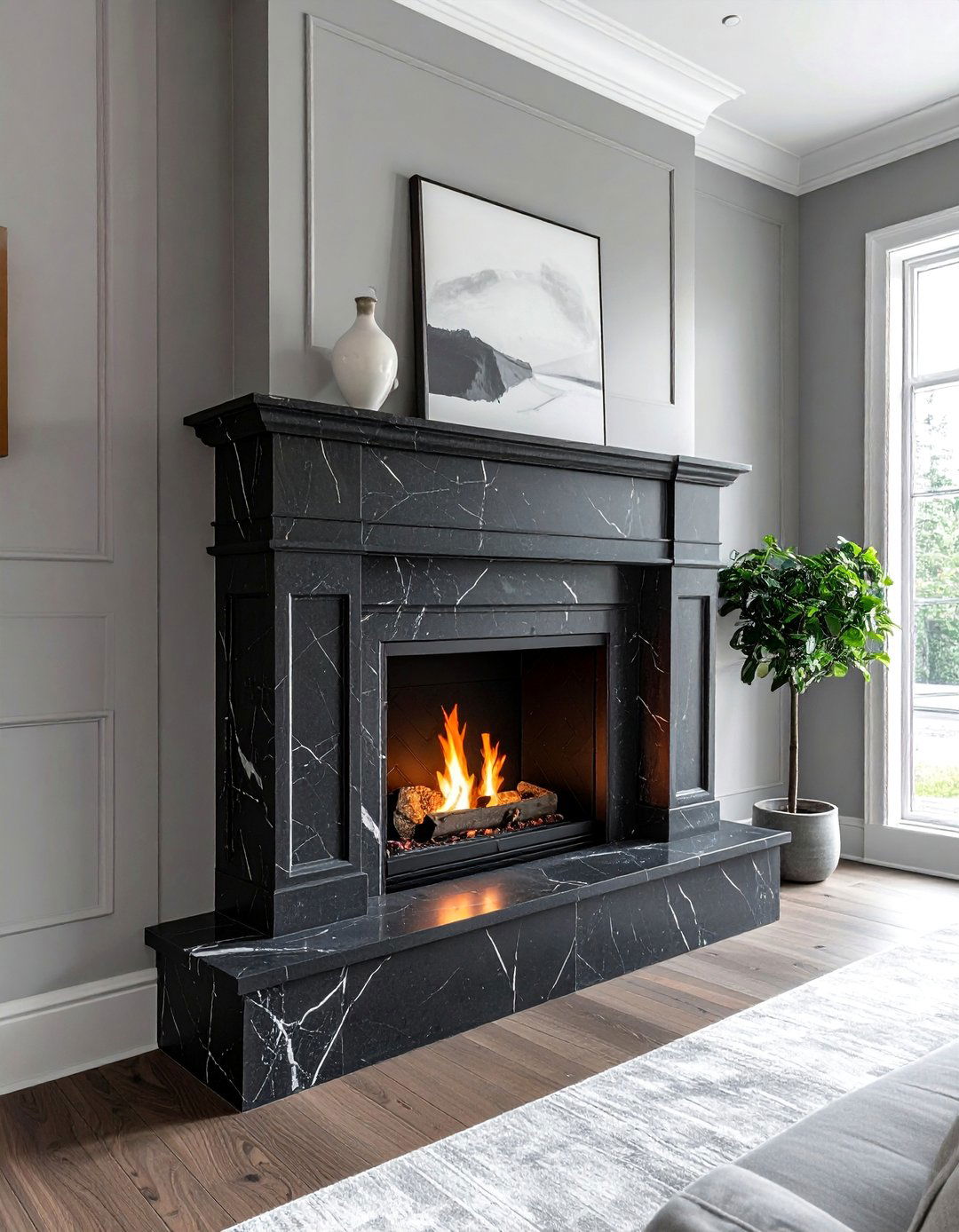
Consider a transitional fireplace with a soapstone surround for a moody, sophisticated, and highly durable centerpiece. Soapstone's deep, velvety charcoal-gray color, often accented with subtle white veining, provides a dramatic yet soft visual anchor in a room. This natural stone has excellent heat-retention properties and develops a beautiful patina over time, adding to its character. Its matte finish is less formal than polished marble, aligning perfectly with the comfortable elegance of transitional style. Paired with a simple mantel or left unadorned, a soapstone surround creates a powerful statement that is both modern in its simplicity and classic in its material choice.
12. Transitional Fireplace with an Arched Firebox Opening
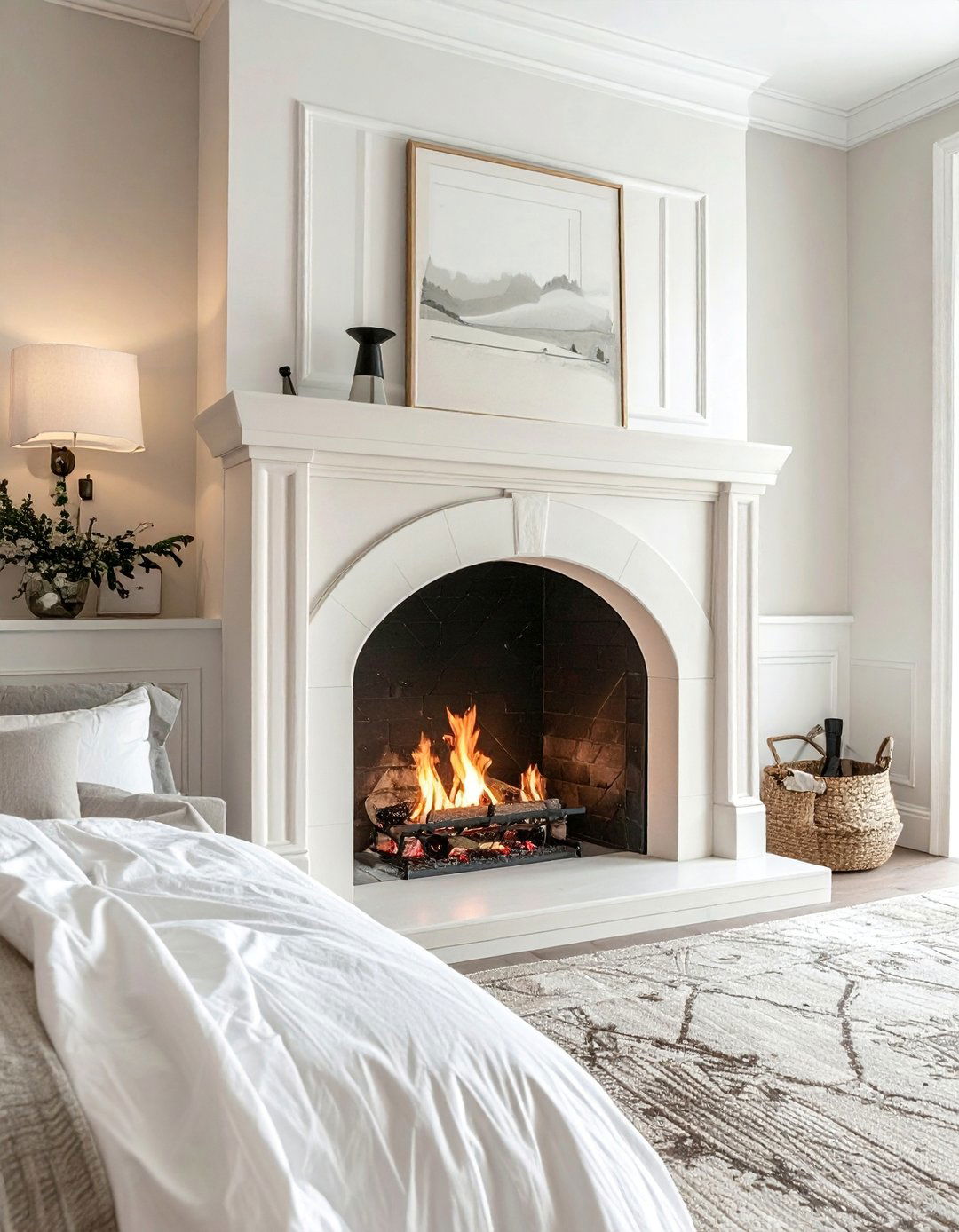
To soften the clean lines of contemporary design, a transitional fireplace with an arched firebox opening introduces a graceful, classic element. The gentle curve of the arch provides a subtle nod to traditional architecture without incorporating ornate, heavy detailing. This feature works beautifully when framed by a simple, understated surround made of plaster, stone, or tile. The contrast between the soft arch and the straight lines of the mantel and surrounding walls creates a pleasing visual balance. It’s a sophisticated way to add a touch of romance and architectural interest to the fireplace, ensuring it remains a timeless and elegant focal point.
13. Transitional Fireplace with a Contrasting Black Interior
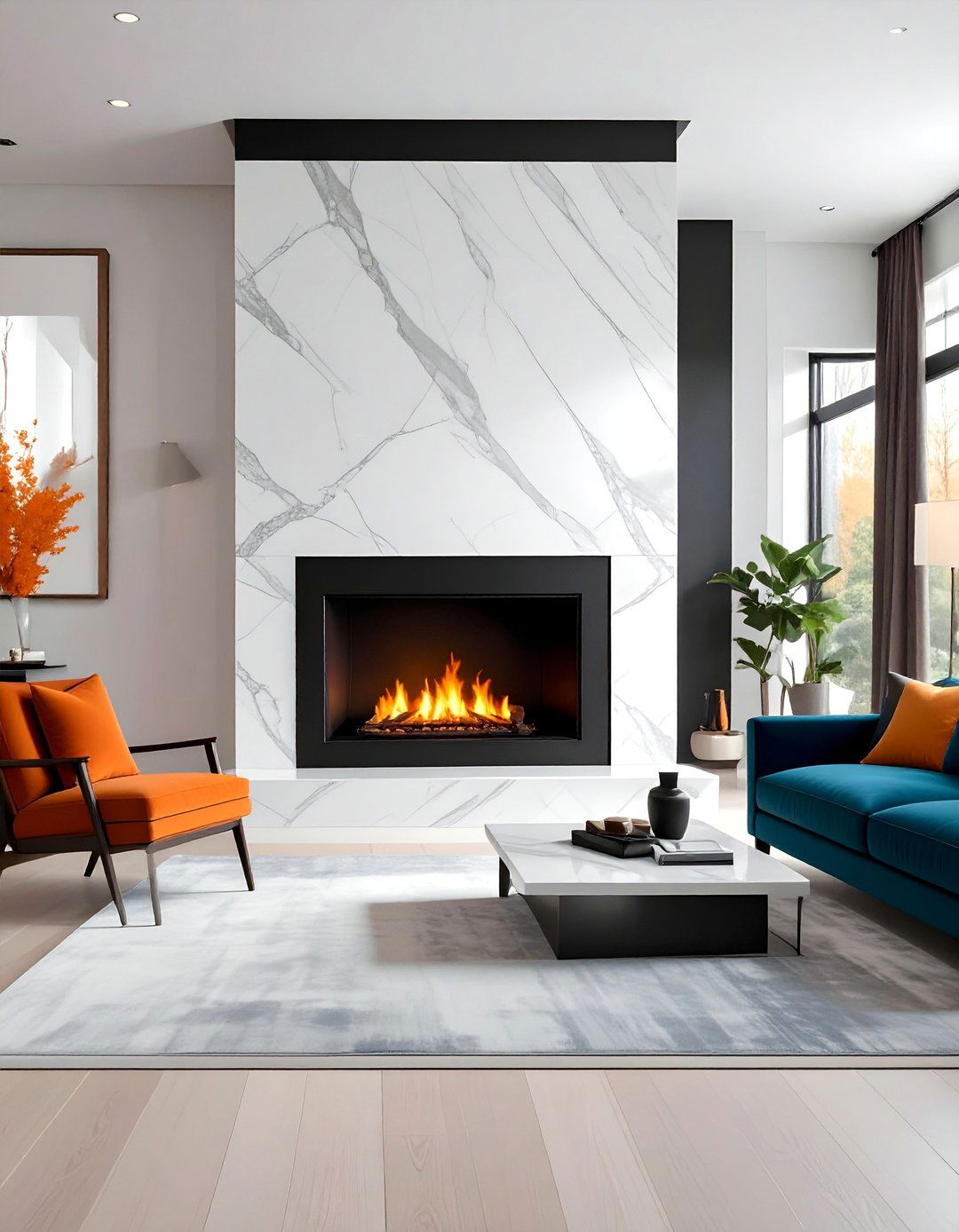
A simple yet highly effective technique for a modern look is a transitional fireplace with a contrasting black firebox interior. Regardless of the material used for the surround—be it white marble, light-colored tile, or neutral cast stone—painting the inside of the firebox a deep, matte black creates a powerful visual punch. This dark background makes the flames appear brighter and more vibrant, enhancing the mesmerizing quality of the fire. It also provides a clean, graphic depth that makes the entire fireplace assembly look more intentional and polished, perfectly capturing the transitional blend of classic form and contemporary, high-contrast detail.
14. Transitional Fireplace with Symmetrical Wall Sconces
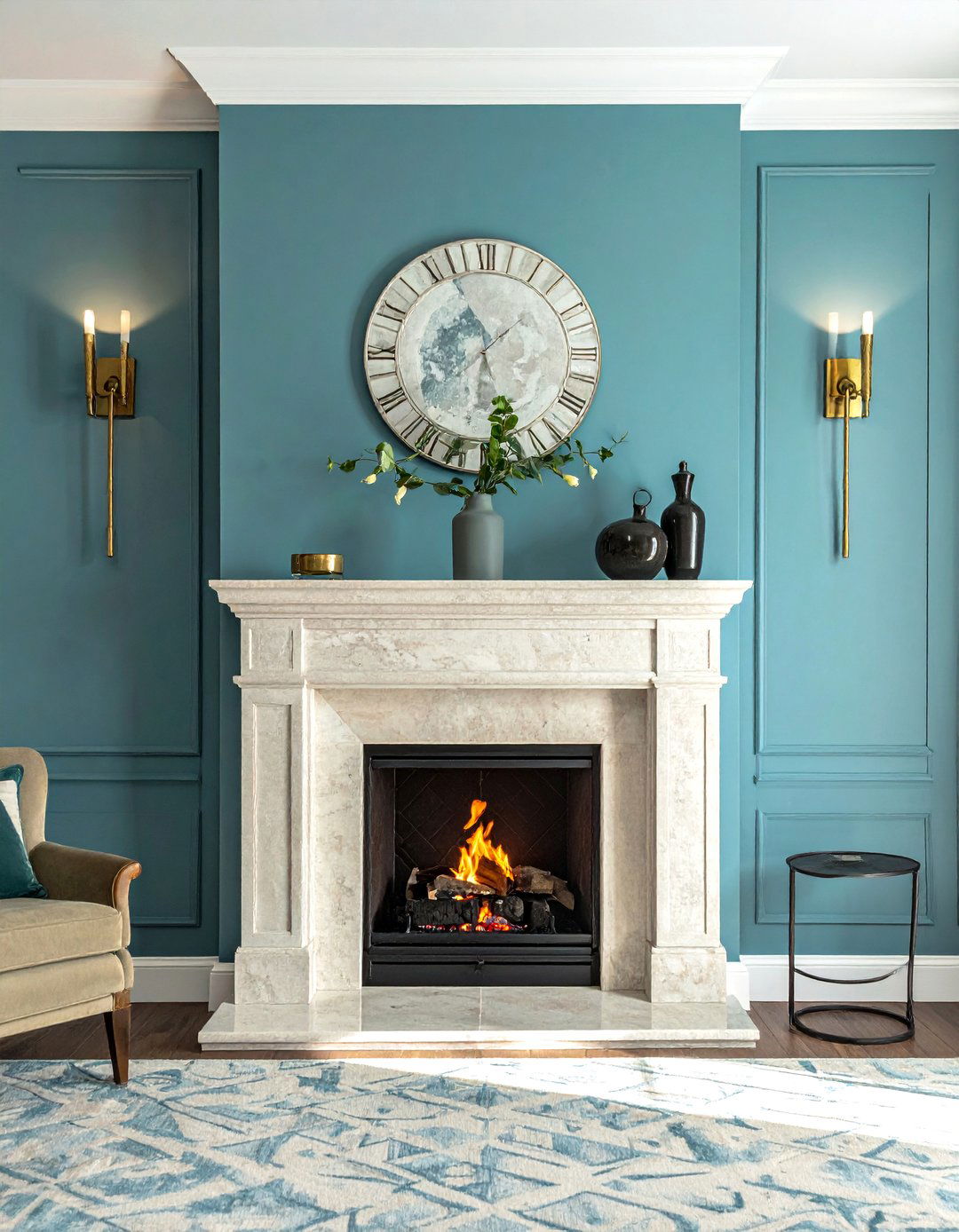
Enhancing the fireplace as a central feature, a transitional design incorporating symmetrical wall sconces adds layers of light and classic balance. Placing a stylish, understated sconce on either side of the fireplace draws attention to the area and provides warm, ambient lighting. Choose fixtures with clean lines and simple forms, perhaps in a brushed nickel, aged brass, or matte black finish, to complement the transitional aesthetic. This purposeful symmetry creates a sense of order and elegance, framing the fireplace and any artwork or mirror above it. It's a thoughtful detail that elevates the entire wall, making it feel more complete and inviting.
15. Transitional Fireplace with Large Format Porcelain Tile

For a seamless and modern look with endless design possibilities, a transitional fireplace featuring large format porcelain tile is an excellent choice. These oversized tiles minimize grout lines, creating a clean, monolithic appearance similar to natural stone slabs but often at a more accessible price point. Porcelain is available in a vast array of finishes, from realistic marble and concrete looks to subtle textured patterns. This versatility allows you to achieve a high-end, custom feel while maintaining the clean, uncluttered principles of transitional design. The result is a durable, low-maintenance, and sophisticated surround that perfectly frames the hearth.
16. Transitional Fireplace with a Stepped or Tiered Mantel

To add architectural interest without excessive ornamentation, a transitional fireplace with a stepped or tiered mantel offers a sophisticated solution. This design involves layering simple, clean-lined moldings to create subtle depth and dimension. Rather than intricate carvings, the focus is on a structured, geometric profile that builds outward in steps. This technique provides more substance than a simple shelf mantel but remains far more restrained than a traditional, ornate design. It creates a refined focal point with a strong architectural presence, perfectly embodying the transitional principle of blending classic forms with modern simplicity for a look that feels both fresh and timeless.
17. Transitional Fireplace with a Polished Nickel Fire Screen

Accessorizing with intention is key in transitional design, and a polished nickel fire screen adds a touch of jewelry to the hearth. This bright, reflective finish brings a contemporary sparkle that contrasts beautifully with more traditional materials like stone or brick. Opt for a screen with a simple, clean-lined frame and an unadorned mesh to maintain the uncluttered aesthetic. The polished nickel finish coordinates well with both cool and warm color palettes, acting as a versatile accent piece. It’s a functional detail that enhances safety while contributing to a layered, sophisticated look that feels both glamorous and tastefully restrained.
18. Transitional Fireplace with a Low, Linear Profile
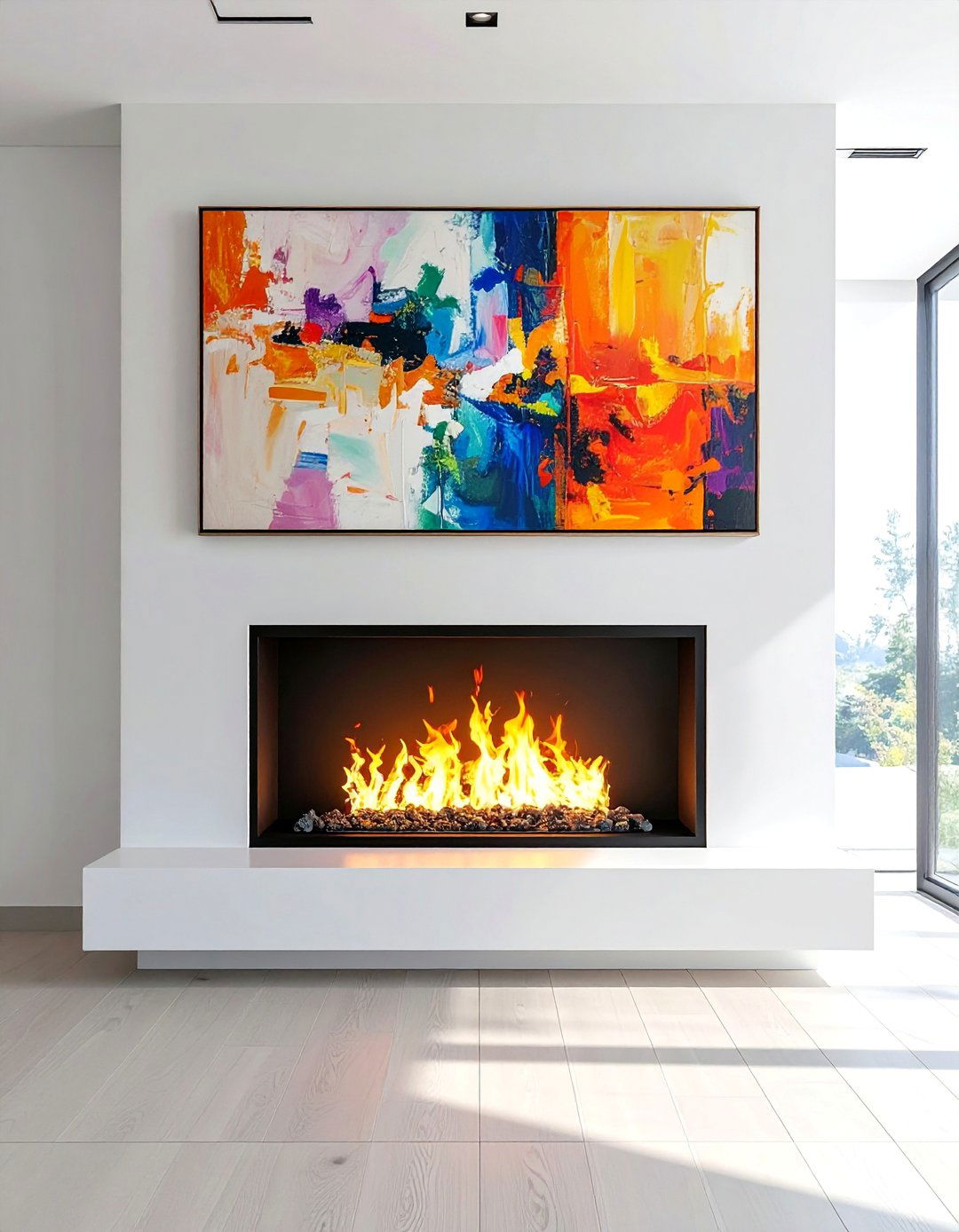
Reflecting a more contemporary influence, a transitional fireplace with a low, linear profile offers a sleek and modern interpretation of the classic hearth. This design features a wide, rectangular firebox set lower to the ground, creating a horizontal emphasis that makes a room feel more spacious. The surround is typically minimal, often just a simple frame of stone, metal, or tile that doesn't compete with the captivating ribbon of flame. This style is perfect for placement beneath a large piece of art or a wall-mounted television, as its understated form integrates smoothly into the wall, providing warmth and ambiance without dominating the space.
19. Transitional Fireplace with a Textured Plaster Finish
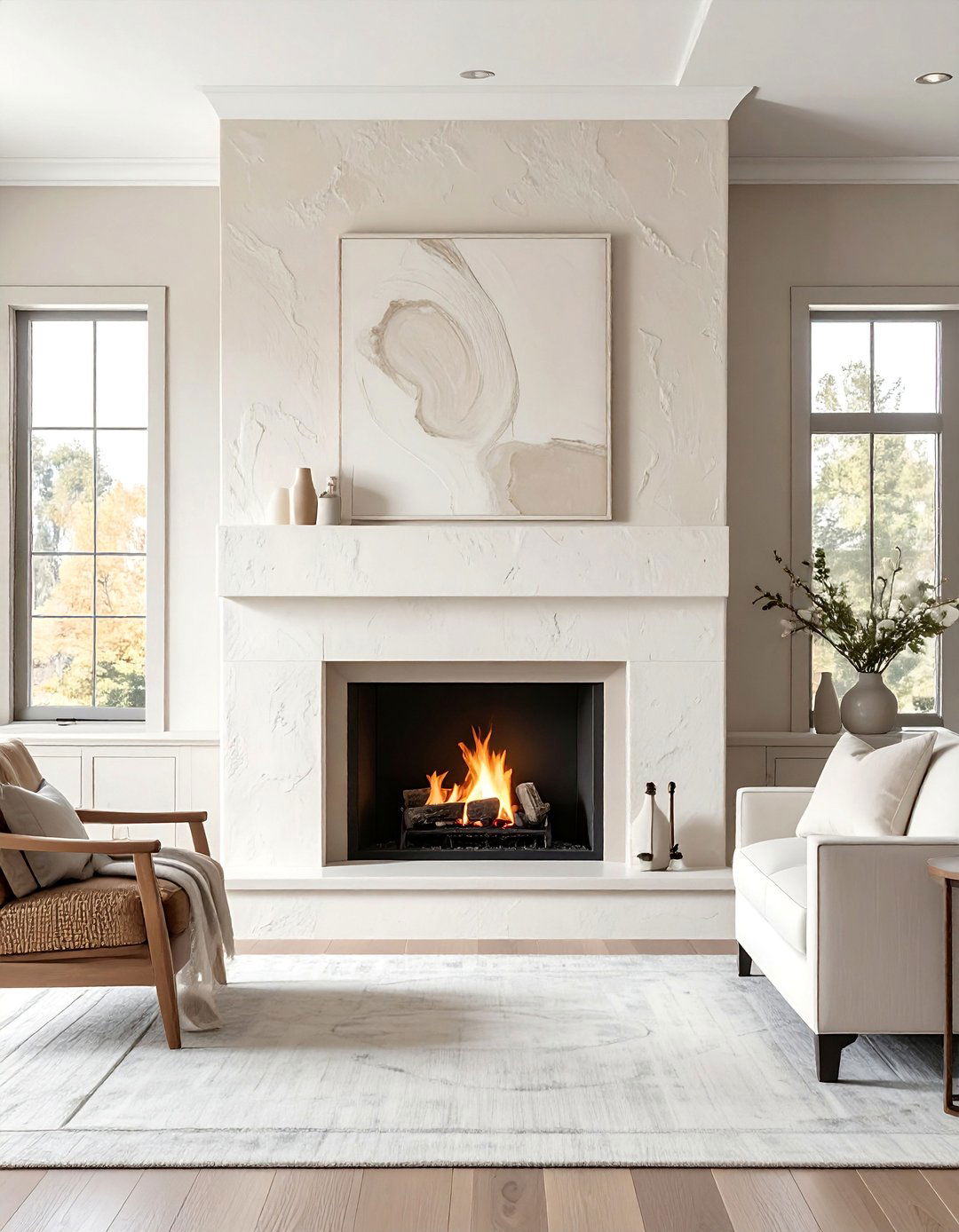
For an organic and subtly rustic feel, a transitional fireplace with a textured plaster finish provides a soft, artisanal touch. Techniques like limewash or Venetian plaster create a surface with gentle variations in color and texture, adding depth and a handcrafted quality to the fireplace surround. This finish can be applied in a smooth, monolithic form or shaped into a simple mantel and surround. The neutral, earthy palette inherent to plaster complements the transitional style perfectly, creating a warm, inviting focal point that feels both ancient and modern. It’s a sophisticated choice that celebrates imperfect beauty and understated elegance in the space.
20. Transitional Fireplace with a Raised Hearth Design
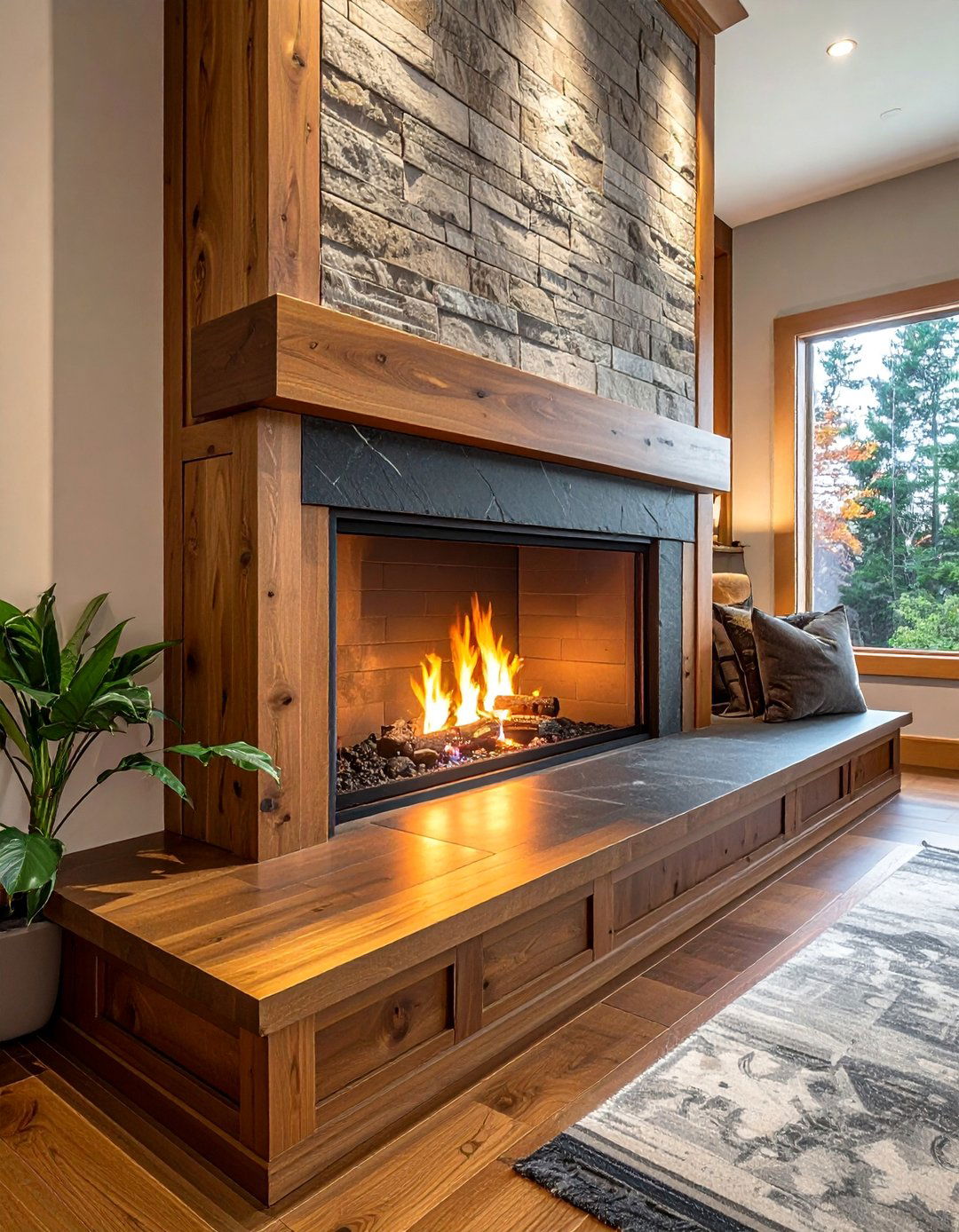
A transitional fireplace with a raised hearth adds dimension and functionality while maintaining a clean aesthetic. Elevating the hearth off the floor creates a natural seating ledge, making the fireplace an even more inviting gathering spot. This design element can be crafted from the same material as the surround, such as limestone, concrete, or slate, for a cohesive, monolithic look. The raised platform clearly defines the fireplace area and provides a sense of substance and permanence. It’s a classic feature reinterpreted with simple, unadorned lines, perfectly capturing the blend of traditional comfort and modern form that defines the versatile transitional style.
Conclusion:
Ultimately, transitional fireplaces offer a masterful blend of classic comfort and contemporary simplicity. By focusing on clean lines, high-quality materials like limestone, marble, and concrete, and a balanced approach to design, they create a timeless focal point. Whether through floor-to-ceiling statements, symmetrical built-ins, or subtle textural details, these ideas provide a versatile foundation for any interior. The key is to harmonize traditional shapes with modern finishes, resulting in a sophisticated and inviting hearth that will anchor your living space with enduring elegance and style for years to come, adapting to changing tastes.


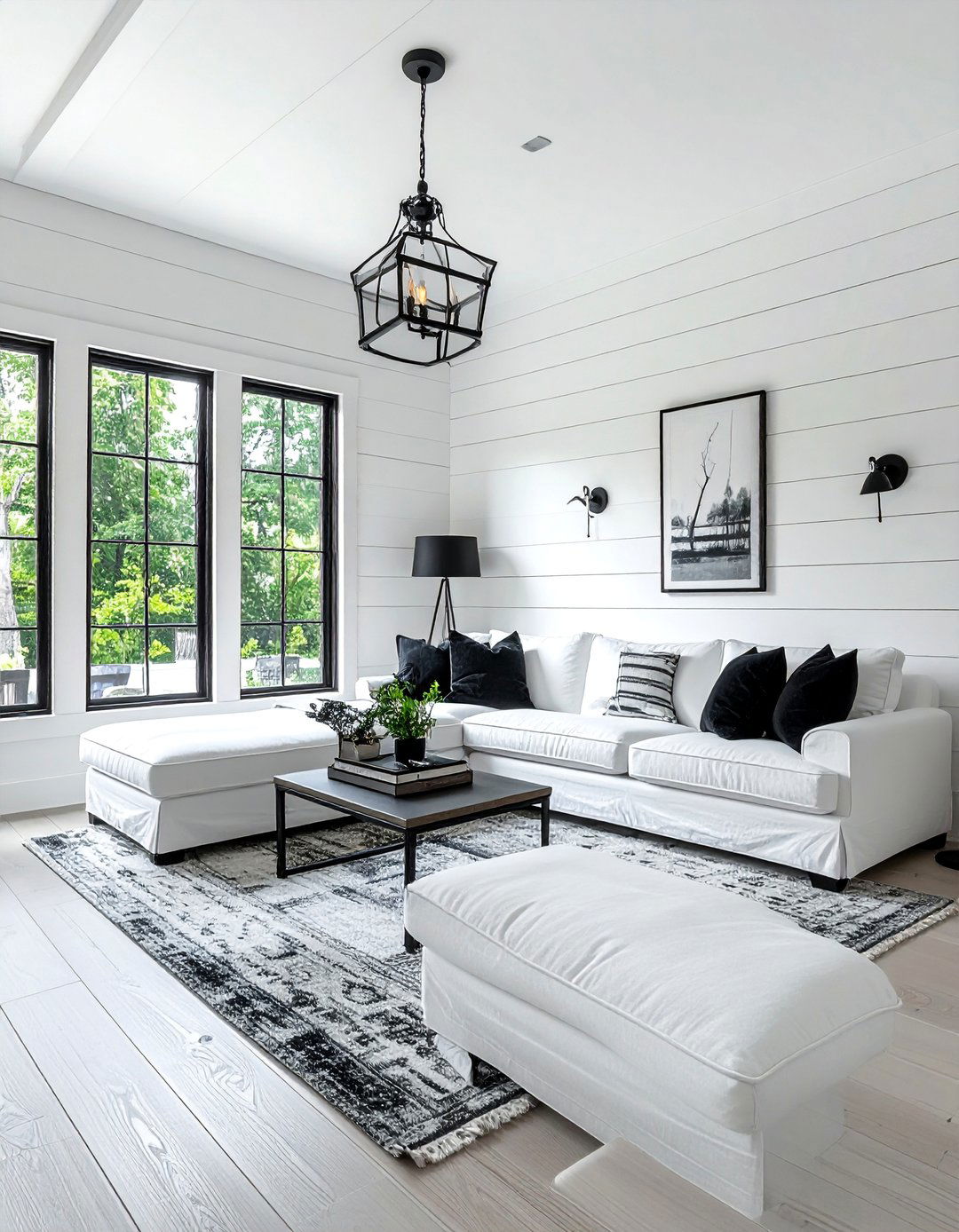

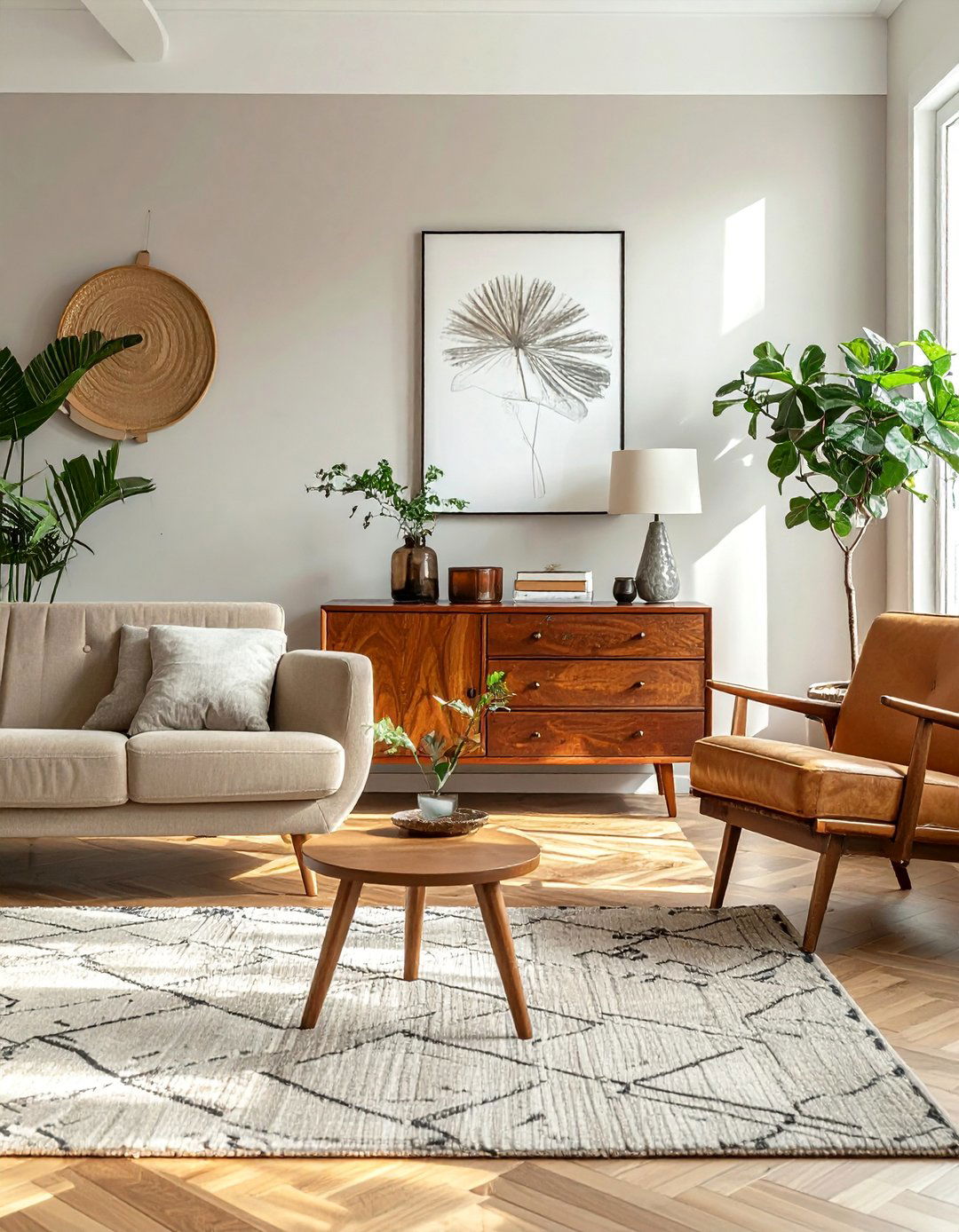
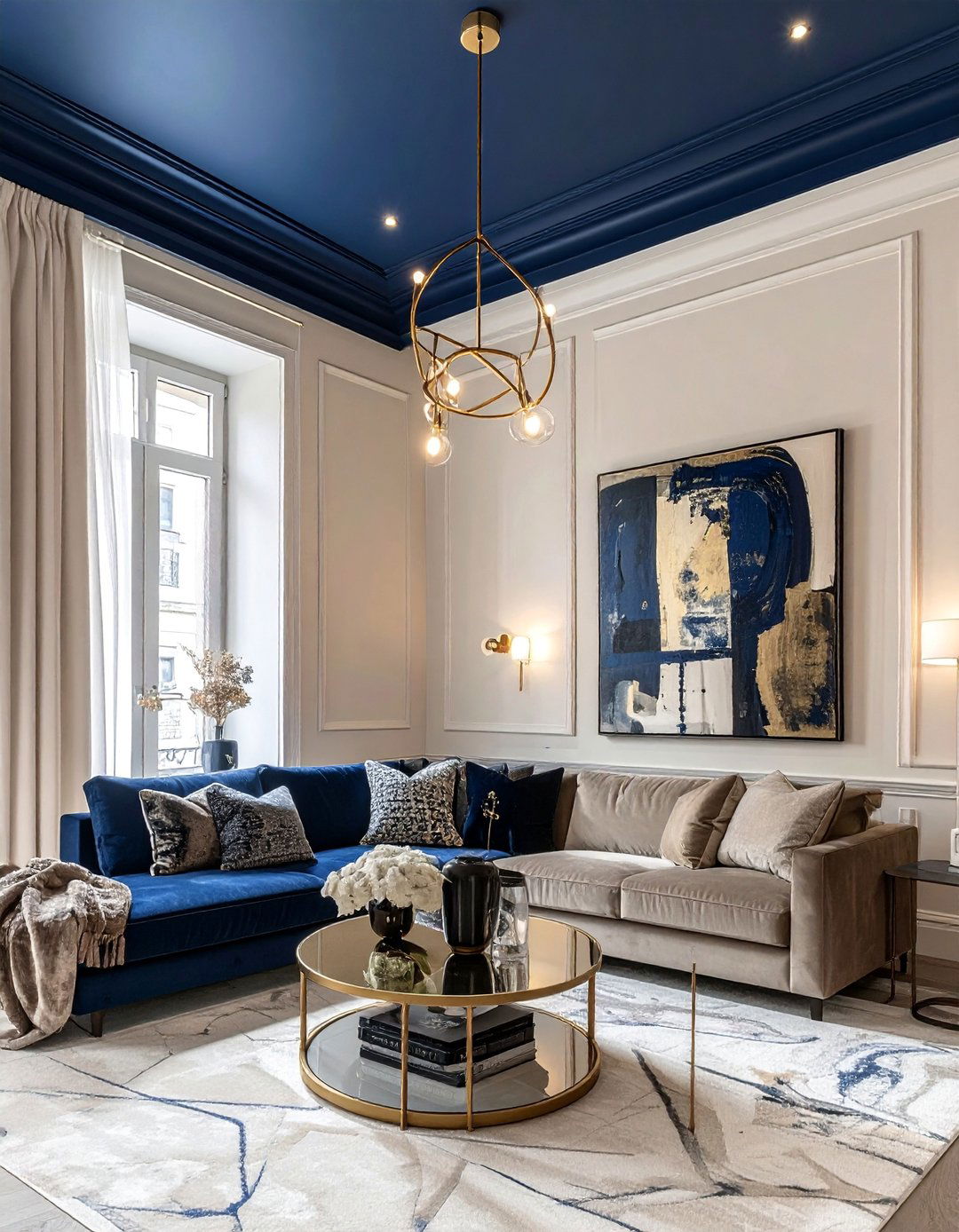


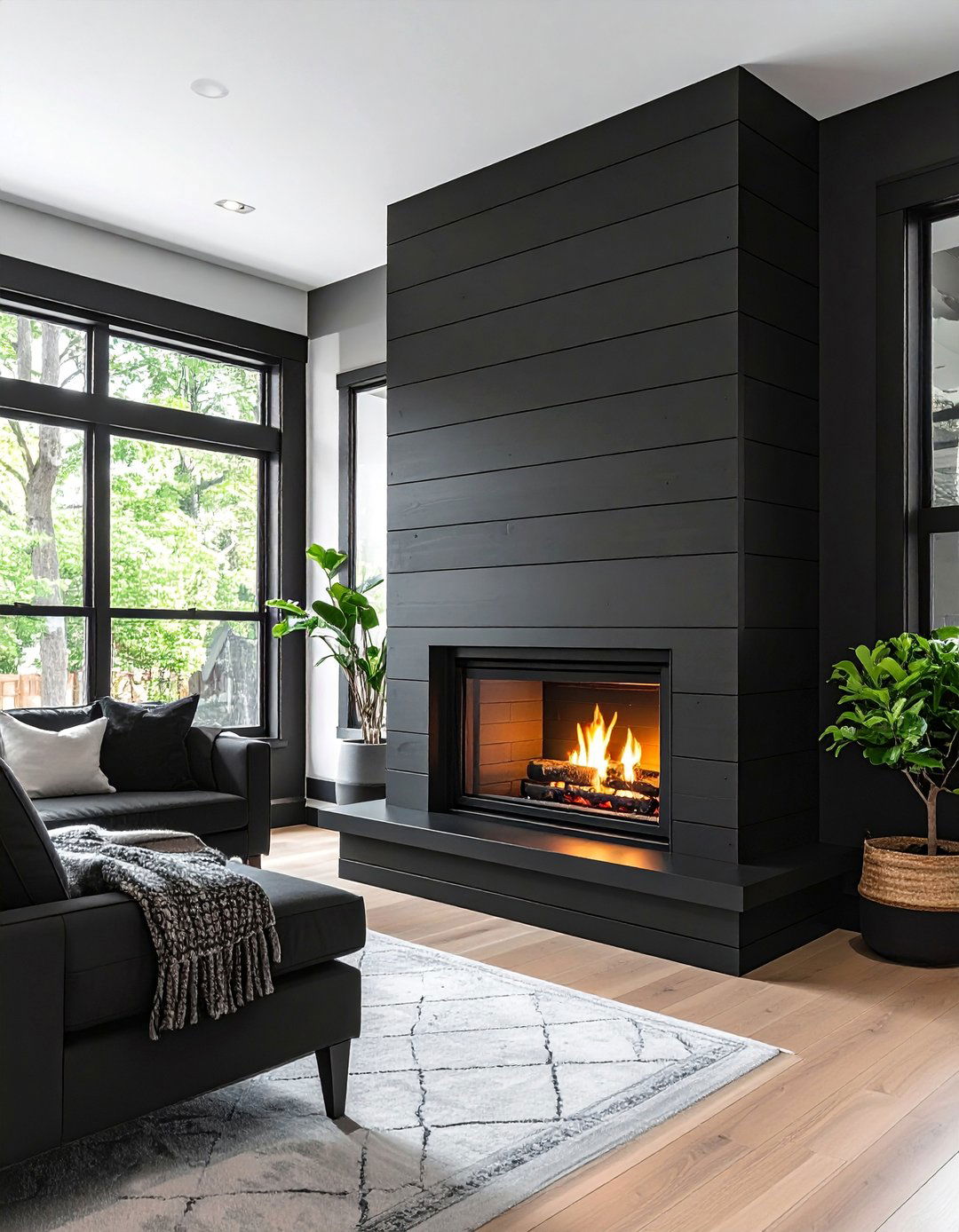
Leave a Reply